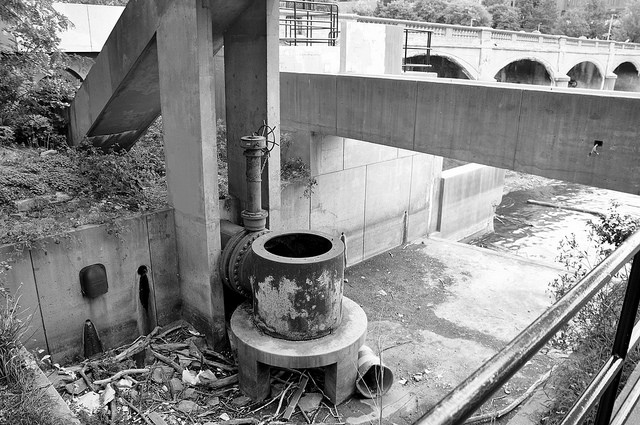
And DC isn’t immune from the problem.
Good news for people who like dismaying news: Washington, DC, capital of the free world, has pretty crummy public infrastructure. So says a report from the American Society of Civil Engineers, which gave the district a cumulative C- letter grade.
That grade was weighed down mightily by an overworked public transit system, overburdened highways, and a suspect levee system. And as DC grows in population and more people use those public amenities, they will degrade without significant financial investment. Ranjit Sanhai, a Northern Virginia engineer who worked on the report, told the Washington Post the study says “basically says it is in mediocre condition that requires attention.” But hey, it’s a passing grade, at least! At least the water isn’t bad.
Can’t say that about the rest of the country, though.
For instance, look at Flint, Michigan, where a state of emergency has been declared after ancient water infrastructure and a fumbled government response to the alarms it set off led to an outbreak of legionnaire’s disease.
Out of sight and out of mind, water infrastructure – particularly in older industrial cities in the Midwest – is often left to decay. Says Robert Puentes from the Brookings Institution:
Some of these systems were built a hundred years ago. Some of the pipes are made out of wood. Some of them were built the times when metropolitan areas were expanding and decentralizing. And we just need to reinvest in these existing systems.
But because we don't do a good job in this country investing in the infrastructure that's already built — we do a good job building new stuff, we don't do a good job taking care of what's on the ground — things like water infrastructure are seriously neglected.
Water infrastructure – just like rail and road infrastructure – is necessary to keep a domestic economy in good working order. And none of it’s cheap, as the Post notes; it will take about $3.6 trillion to put the entire country’s infrastructure in good working order.
Still, it’s a necessary investment in our economy, our future – and, of course, it’s a chance to invest in manufacturing. Tax dollars spent on American infrastructure should go to American makers.
While we wait for that $3.6 trillion check to be written, our thoughts will be residents of Flint. Find a way to donate water here.
